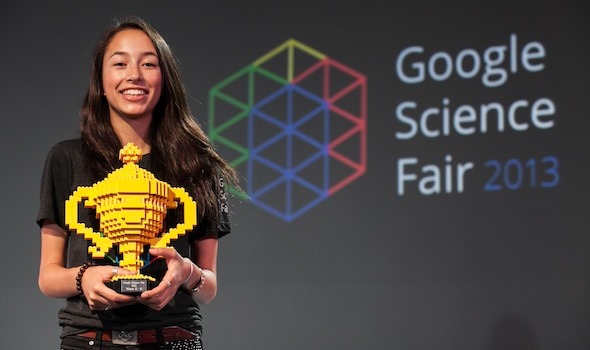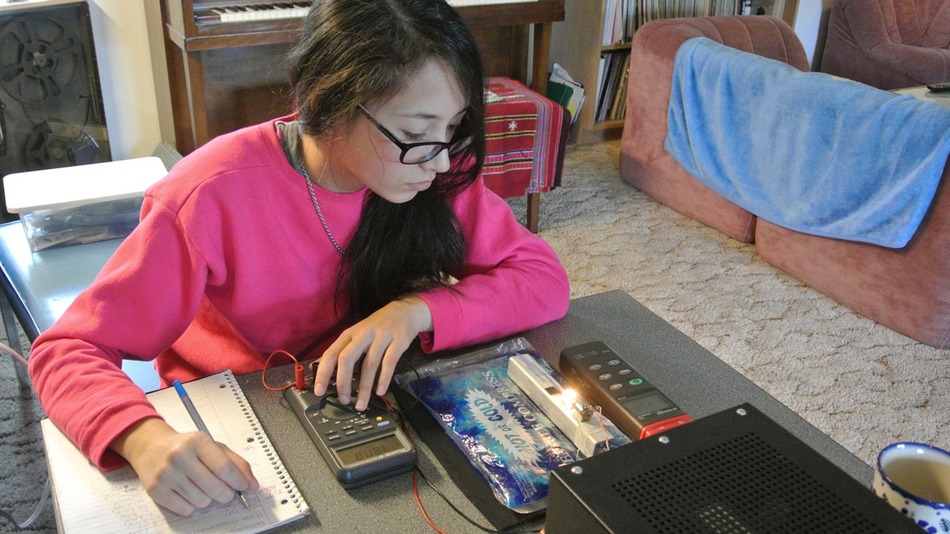
The current state of electricity access
Today, more than a billion people around the world live without electricity, either due to lack of access or their inability to afford it. This fact leaves countless families at a terrible disadvantage, forcing them to rely on wood-fired stoves, oil-burning heaters, candlelight or diesel-generators. In addition to being expensive and cumbersome, many of these options are hazardous to the health of people that are forced to live together in small quarters.
Innovating how communities can access electricity
As a result, there are many innovators and researchers who are looking to bring electricity to developing communities through other means. One such innovator is Ann Makosinski, a 16-year old student from Victoria, British Columbia. Last year, she participated in 2013 Google Science Fair, where she unveiled a design for a flashlight that uses a person's own bodyheat to create light.
Basically, the flashlight is a series if LED bulbs that rely on the thermoelectric effect to generate electricity when held. This is done through a series of devices that are known as Peltier tiles, which produce electricity when heated on one side and cooled on the other. The tiles are fixed to the outside of the flashlight while the tube itself is hollow.

Her invention was one of 15 that were selected from thousands of entries made by students from all around the world. For her invention, she won the top prize in the 15-16 age category, earning a $25,000 scholarship and a “once-in-a-lifetime experience” from either CERN (the European Organization for Nuclear Research), LEGO or Google, and a trophy made out of Lego.
This is no small accomplishment for someone who is still working their way through high school. And yet, it was no surprise at all for those who know Makosinki and have been following her exploits. From a young age, Ann showed an affinity for circuits and electronics. By Grade 6, she began submitting projects to science fairs and became interested in alternative energy.
In addition to her natural interest in the subject, Ann also drew much of her inspiration from a conversation she had with a friend back in the Phillipines. Like many people living in developing countries and communities, Ann was saddened to learn that her friend was failing school because she was unable to complete her homework at night. The culprit was a lack of lighting, which was apparently due to the fact that her family could not afford the cost of being hooked up to the local grid. This story is a very common one, unfortunately, and Ann became motivated to look for a solution.

As Ann told HeroX via email: "I think what inspired me to create the flashlight was the realization that so many people around the world still don't have something as simple as light (and electricity). I wanted to do something about this, instead of hearing people talk about it all the time and not doing anything about the problem."
Already, she had experimented with Peltier tiles for her Grade 7 science fair project. While researching her project, she thought of them again as a way to potentially capture the thermal energy produced by the human body. After doing some calculations, she found that the amount of energy produced by a person’s hand was theoretically sufficient to power an LED light.
Facing and overcoming design challenges
However, putting it into practice proved somewhat more difficult. After buying some Peltier tiles on eBay, she tested them and found that while they generated more than enough power, the voltage produced was only a fraction of what she needed. She rectified this problem after doing some further research, where she discovered that the addition of transformers could be used to boost the voltage.

She spent months doing research on the internet, experimenting with different circuits and even building her own transformers, which still didn’t provide enough voltage. In the end, she came across an article on the web about energy harvesting that suggested an affordable circuit that would provide the voltage she needed when used with a recommended transformer. Finally, the circuit worked.
Makosinski made two different flashlights, each using a slightly different kind of Peltier tile, by assembling the electronics with other parts. The first employed an aluminum tube which was used to transfer the cooler temperatures of the air to one side of the Peltier tiles. The second model relied on a PVC tube to house the aluminum tube, with an opening cut in it to allow a person's hand to come in contact with the other side of the Peltier tiles.
Makosinski tested the flashlights and found that both were brighter when the air temperature was 5 degrees Celsius than when it was 10 degrees, due to the bigger difference between body temperature and the air temperature. But even at 10 C, both flashlights maintained a steady beam of light for over 20 minutes. All in all. the materials for each flashlight cost about $26, she said, but she thinks that if it were mass produced, it could be manufactured and sold for a far lower price.
However, what is most exciting about the invention is the way it manages to provide energy in a way that is completely sustainable. As Ann explained: "Throughout the past years, we have seen how much the use of renewable energy has come to the forefront. Using the Earth's natural energy, but not destroying the Earth at the same time is so important, especially with our eyes now wary of global warming."

The future of the body-heat powered flashlight
Since winning at the 2013 Google Science Fair, Ann has gone on to promote her invention and alternative energy research and innovation all around the world. In addition to doing TEDx science talks in Redmond, WA, Vancouver, BC, and in Edmonton, AB, she also spoke at the 2013 Techtoria in her hometown of Victoria BC. She presented her invention on Jimmy Fallon Live as part of his "Fallonventions" segment, and has conducted numerous interviews with film crews from the US and Europe who are making short documentaries.
This past May, she represented Canada at the International Science and Engineering Fair 2014 in Los Angeles and won second place in the Electrical/Mechanical Engineering category, as well as 3 other Special Awards. She will also be speaking at TEDx Victoria this weekend.
As for the body-heat powered flashlight and what the future holds for it, Ann and her family are busy trying to bring it to market, though she admits it's a little hard with her busy schedule:
"Right now, we are getting the patent and talking with manufacturing companies. I haven't had as much time at all that I would like to work on it because I am struggling with grade 12 and applying for universities and trying to get decent grades, etc, etc. Hopefully I'll have more time in the upcoming weeks... Great plans for the future, I can't wait to see what happens next."
For more information on Ann Makosinksi, the body-heat powered flashlight, and to stay up-to-date on its commercial development, check out Ann's blog at anninventions.com. Also, be sure to check out the following video featuring Ann and her invention - "Unleashing the Thermoelectric Power Inside of You":
And her speech at TEDx Renfrew Collingwood, entitled "Be The Source":
Sources:
- www.cbc.ca/news/technology/google-science-fair-wins-include-b-c-teen-s-body-heat-powered-flashlight-1.1866106
- www.cbc.ca/news/technology/body-heat-powered-flashlight-takes-teen-to-google-science-fair-1.1317745
- www.gizmag.com/body-heat-powered-flashlight/28113/
- technexo.blogspot.com/2013/06/Hollow-Thermoelectric-Flashlight-by-15-year-old-Ann-Makosinski.html
- annventions.com/
- mashable.com/2013/09/10/hollow-flashlight/
- blogs.smus.bc.ca/review/2013/09/06/a-google-science-fair-summer/#.VGzjb8kiCto
- googleblog.blogspot.ca/2013/09/and-winner-of-2013-google-science-fair.html
- tc.youthscience.ca/news/ann-makosinski-wins-google-science-fair-2013
Image Credits:
- Ann Makosinski: Youtube
- Google Science Fair: Betakit
- Body Heat Powered Flashlight: Engineering
- Ann (2): Mashable
- Jimmy Fallon LIve: NBC








